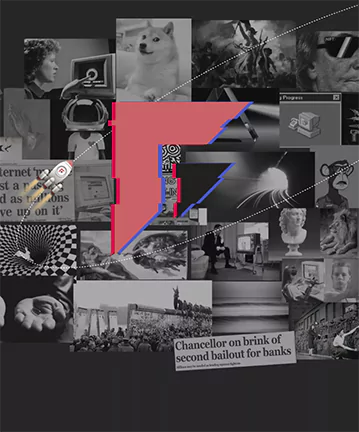*Lightspeed follows the social self-expression space closely, and was an investor in RockYou, Hungry Machine (after it became LivingSocial), and Affirm founded by Max Levchin who also founded Slide.
Last week GIPHY announced some amazing statistics:
GIPHY serves more than 1 billion GIFs per DAY, and growing.
GIFs via GIPHY are seen by more than 100 million Daily Active Users.
GIF viewers via GIPHY watch more than 2 million hours of GIFs per DAY.
Giphy is all the GIFs. People have noticed their incredible growth. Today, GIPHY announced that DFJ Growth and IVP led a new $72M round of investment in the company, with participation from China Media Capital and existing investors.
GIPHY was incubated at Betaworks and launched in 2013 when it saw 30k visitors in its first weekend. Shortly afterwards it raised a small seed round and was off and running. Lightspeed is proud (not “humbled”) to have recognized GIPHY’s greatness early on. We led the next two rounds of financing in the company. At the time of our first investment, GIPHY was 6% of the size it is today.
It’s been said that disruptive innovation starts out looking like a toy. That is certainly what most people thought about GIPHY when it started. But the CEO and founder, Alex Chung, understood that GIFs are far more than toys. They are one of the internet’s native art forms capturing humor, emotion and nuance within the medium of popular culture.
GIFs enable post-literate communication, layering context over mere words.
This has become increasingly important as text messaging has become the dominant form of interaction between people. GIFs may be the only trend in messaging that started in the West, not in Asia (contrast mobile messaging, emojis, stickers, digital goods etc). The weight of these forces has driven the incredible growth of GIFs over the last few years. And GIPHY has been the clear leader in the GIF space, appearing even above the definition of GIF in Google searches.
For those that still don’t understand the importance of GIFs, it is helpful to put them in historical context. Self expression has always been core to humans. This self expression often takes the form of appropriating popular culture. When I was in high school, that meant carefully considering which musicians and celebrities and sports stars to cut out of a magazine to stick to the inside of your locker, or on your school binders. Thinking about which songs to put on your mixtape. Selecting which bands concert t-shirt to wear.
We define ourselves to others by the popular culture that we appropriate.
This behavior stays constant even as the medium for communication changes. In the early days of usenet and email, people built elaborate ASCII art signature files. In the heyday of AOL Instant Messenger, people agonized over which buddy icon to choose. When MySpace was launched, and when Facebook was about the profile page, not the feed, companies like Hungry Machine, RockYou and Slide* exploded to help users “bling out” their profiles. So it was natural that when messaging took off, users would want a mechanism for self expression there as well.
The first attempts at self-expression within messaging were hacks, as the first attempts at anything are. Punctuation and letters were put together to express nuance. ;-P Eventually these were formalized into Emojis. Emojis are great, but they still constitute a fixed alphabet (albeit a large alphabet) of context. It is hard to be self-expressive when you’re choosing from the same fixed alphabet as everyone else. This is where GIFs came to the fore.
GIFs enable users to avail themselves of the entire catalog of popular culture to help express themselves. Art, TV, movies, memes, all become part of the alphabet, enabling richer, funnier, more contextual, more personalized communication than ever before.
When you bet on a change in popular culture, you bet on the winner in that trend. GIFs are now part of popular culture. And GIPHY is the winner.
Authors



